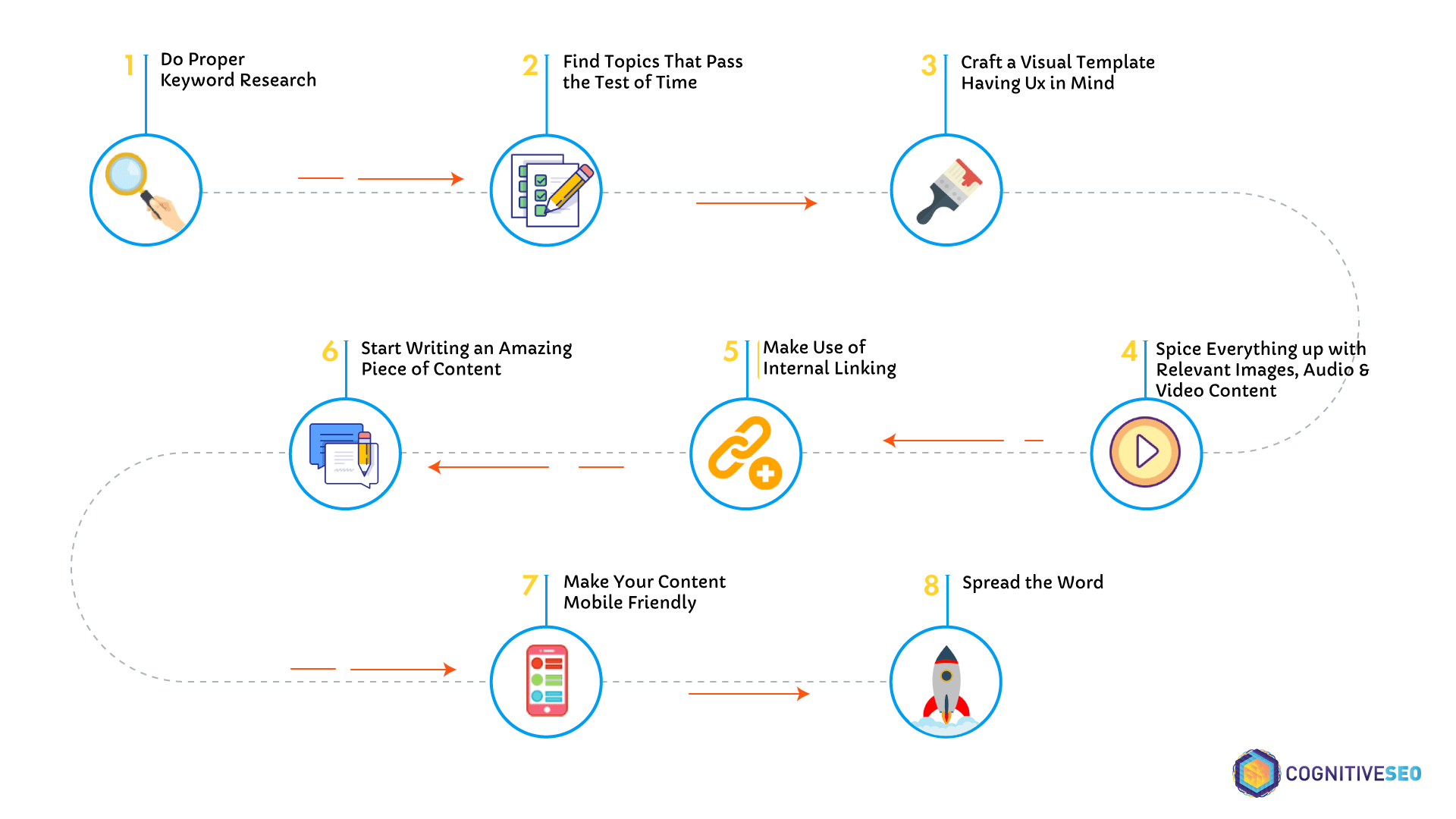Ads are everywhere. Which means copywriting is, too.
If you have a good grasp of English, you can write copy.
The thing is…most people suck at it.
When I started blogging, I definitely did. Heck, maybe I still do!
What I’ve learned along the way, though, is one simple thing that most people aren’t doing.
It’s easy to get your head around but it takes practice.
If you want to learn about copywriting, you’re either doing it to:
- Start a copywriting career
- Improve your or your company’s copy for content marketing
- Up your game as a freelance writer
Whichever road you’re on, this blog will help.
We’ll cover the basics for those that need it. But if you want to cut to the chase, click here to scroll to the good stuff.
What Does a Copywriter Do?
There’s a huge debate about the job of a copywriter vs. a content writer.
Though there are differences, there’s a lot of overlap.
A copywriter should persuade people to take action. A content writer should engage the reader.
Shouldn’t a good writer do both?
If you’re a solopreneur or have a small team, you’ll definitely want to do both.
Copywriting expert Brian Clark (founder of copyblogger) agreed:

Basically, a copywriter puts words together to make people take action. The words are the ‘copy’.
At the end of the day, you want to improve your copy to increase conversions. Doesn’t matter if it’s a single line or a multi-page report – the goal is the same.
Courses like Copyhackers teach what they call ‘conversion copywriting’. But do you really need to pay a couple grand to learn how to write great copy?
Basic Copywriting Skills (No Expensive Copywriting Course Needed)
You could pay for an online course to learn copywriting. If you have zero writing skills, don’t let us stop you.
If you’re not quite that bad, try some other options first.
Read ‘learning copywriting’ step-by-step guides. See what you learn from handy blogs like this.
Check out some free courses. Buy copywriting books. (Gary Halbert’s “The Boron Letters” is a popular one.)
Learn and practice the fundamentals before parting with your hard-earned cash.
5 basic copywriting skills make a good copywriter:
- You need to write well – spelling and grammar must be on point
- Consider structure – short sentences and paragraphs (especially for mobile users)
- Ability to edit – see when you’re rambling and cut it down
- Imagination – jump into the mind of your audience
- Research – base your ideas on keyword research for SEO (we’ll cover that)

Learn Copywriting 101: What Makes Good Copy?
Copy can take many forms.
You’ve got:
- Landing pages
- Advertising (sales copy)
- Blog posts
- Web pages
- Email marketing
- Product descriptions (on sites like Amazon)
- Video scripts
- White papers
- CTA (call-to-action) buttons
- Sales letters
The list goes on.
You might have all 5 basic copywriting skills. That’s great.
But what makes good copy?
No matter the form, successful copywriters have 3 things in common:
- They keep it concise
- Know what the audience wants
- Optimize for SEO
Keep it concise
This is one of the most important copywriting techniques.
Humanity is currently suffering from information overload.
Whether it’s ads, social media posts, or content – we’re getting bombarded.

Source: GIPHY
By keeping it concise, you get to the point. You keep the reader’s attention. You make the complex understandable.
Know what the audience wants
Knowing your audience is crucial for business owners.
When writing copy, the tone of voice you use depends on your readers.
The more you know them, the more effectively you can communicate.
Advertising tycoon David Ogilvy credited the success of his campaigns to “meticulous research into consumer habits”.
You can do the same.
Ask yourself these questions:
- What do they already know?
- What can I teach that they don’t know?
- What’s going to be interesting and relevant?
- What do they want?
- What are their pain points?
Knowing these answers will help with all digital marketing strategies.
Optimize for SEO
Keyword research is the basis of SEO writing.
Pretty much all copywriting nowadays has to have some form of SEO.
It’s all about making sure your business ranks highly on search engines for specific search terms.

Source: Cognitive SEO
Nailing ‘search intent’ means your content writing satisfies what the user was looking for.
But why is this important?
You may be a great copywriter. But copy that doesn’t answer questions that people are asking is pretty useless.
Copywriting Masterclass – Learn Copywriting With One Simple Trick To Elevate Yours
Here it is, folks.
One copywriting tip to rule them all.
The thing is, it’s such a simple strategy that can take your copywriting to the next level. It’s just hard to get the hang of.
It’s writing how you talk. Showing you’re human. Being empathetic.
It’s called conversational copy.
Conversational copy – writing how you talk
Blaise Pascal was a famous French mathematician and philosopher.
He once wrote in a letter:
“I have made this longer than usual because I have not had time to make it shorter.”
It sounds strange.
How can writing less take longer? How can it take more effort to simplify things?
It goes against everything you’ve been taught since school. You’re breaking years of habit.
Almost learning to copywrite all over again.
| Your old copywriting | Conversational copywriting |
| “With over 100 years of laundry expertise, you can trust you are in safe hands.” | “Imagine how good you’d be at something if you’d done it every day since 1908…” |
| “Flood conditions contribute to the growth and transmission of many kinds of fungi, some of which can cause sickness.” | “Be careful when cleaning up after a flood. You could get sick.” |
| “Our program has been running for three years, and we desire to better hear and interact with our beneficiaries, providers, and other stakeholders.” | “We want to hear from you!” |
But what if freelance copywriting is your thing and you work with ‘serious’ industries?
It all still applies! Actually, there’s even more reason to do it.

Source: Marketing Examples
It takes time to get the hang of it. But thing is, it’s so worth it.
How much nicer is the right side of that image to read than the left?
Marketers. It’s time to get back in touch with your human side.
How To Improve Your Conversational Copy When Learning Copywriting
The theory behind conversational copy isn’t hard to grasp.
Write like you’re talking out loud. Easy, right?
When you start trying it, though, it’s a different story.
Luckily, we have 5 strategies to help you out:
- Drop the jargon
- Choose a brand voice
- Don’t follow the crowd
- Study social media
- Practice makes (almost) perfect
![5 strategies for improving conversational copywriting [infographic]](http://blog.quuu.co/wp-content/plugins/a3-lazy-load/assets/images/lazy_placeholder.gif)
Drop the jargon
If you’re a freelance copywriter, this is kind of a godsend.
Imagine having to learn (and constantly use) the business language of multiple industries? No, thank you.
The harder your copy is to understand, the harder it is to get your message across.

Source: PEDIAA
Dave Harland is known as ‘The Word Man’. He’s a copywriting expert you should keep up with.
In one of his articles, he asked readers to think about their website.
“How often do you use:
- Industry-standard phrases that new customers may not know
- In-house terms that are only familiar to you and your staff
- Acronyms without explaining what they mean”
Are you guilty of any of these?
What if, instead, you spoke like your customers? Wouldn’t that make you instantly more accessible?

Source: Marketing Examples
Obviously, this will involve some market research. But the pay-off could be huge.
Potential customers will be able to instantly connect with anything they read on your site.
Almost like they wrote it themselves.
Choose a brand voice
Are you a brand? Or are you trying to start a copywriting business?
Whichever it is, it doesn’t matter. You still need a unique selling point (USP).
This is what’ll set you apart from everyone else.
Take fast-food chain Wendy’s.
They started roasting brands and Twitter users a few years ago, and people love it!
They told Forbes:
“We want to be likable and sassy. We don’t want to be seen as sarcastic and rude. But we walk a fine line.”
This probably isn’t the route you want to go down. But it shows how extreme tactics can work!
Once you know your audience, you’ll be able to decide on a ‘brand voice’.
Anything you post should follow the same style.
Here are 4 examples of brand voices from Content Marketing Institute:
- Passionate
- Quirky
- Irreverent
- Authentic

Source: CoSchedule
Of course, you could pick something totally different. Or a blend of a few.
Whatever you choose, just keep it consistent.
Don’t follow the crowd
Innocent smoothies are one of the best examples of conversational copy.
They took a different road from other corporate brands when they were founded.
Check out their ‘a bit about us’ page on their site to see what we mean.
It says:
“We took our smoothies along to a music festival, where we put up a big sign asking people if they thought we should give up our jobs to make drinks out of crushed fruit instead. Underneath the sign, we put a bin saying ‘yes’ and another one saying ‘no’, then asked people to vote with their empties. At the end of the weekend the ‘yes’ bin was full, so we resigned from our jobs the next day and got cracking.”

Source: Innocent Smoothies
It sounds like a conversation you’d overhear, right? Like a casual chat.
This is what set them apart back in the day.
To stand out from the crowd, you can’t be boring. You need to inspire, entertain or surprise.
Yes, you’ll sometimes need to use templates for automated copy (like welcome emails). But they don’t have to be dull.

Source: Vero
This is a great example from MOO. It’s a welcome email and sales page all in one.
It gets their USP (and a cheeky CTA) across in an easy-going way.
It’s automated, but it doesn’t feel like it is. That’s the power of copy.
Study social media to learn copywriting
Social media platforms are mostly filtered reality.
People post their best days on Instagram and their edited thoughts on Linkedin.
There are some sites, though, that remain pretty unfiltered.
On Facebook and community sites (like Quora), people tend to write how they talk. They’re basically typing their thoughts.
Reading the content on these sites is a great way to learn copywriting and build a style.

Source: Quora
It works with adverts on social media, too.
Next time you’re browsing, keep an eye on things like Facebook ads. Which jump out at you and why?

Source: Sprout Social
This ad from Dollar Shave Club is simple, easy to read, and to the point.
Compare that to this one from Freshdesk:

Source: Taktical
As pointed out by the notes, the copy is terrible. It’s in title case for no apparent reason. Did We Mention It’s Terrible?
If you’re new to writing advertising copy, just keep it simple.
For some bonus learning, check out this guide from Buffer – ‘27 Copywriting Formulas That Will Drive Clicks and Engagement on Social Media’.
Put your social media scrolling to good use!
Practice makes (almost) perfect
Humans aren’t perfect.
If you’re trying to write in a ‘human way’, your copy won’t be either.
Now, we’re not talking about copy littered with typos. It’s still got to be readable. This style of copywriting just has less traditional rules.
Even if you’re not writing copy for your business, you still have this freedom when freelancing.
Break the rules. Nail it. And people will pay you to break the rules.

Source: GIPHY
So, how do you get to that stage? How do you learn copywriting and be better than the rest?
Well, how do you get good at anything?
You’ve just got to do it. Start writing.
Write whenever you can. Write:
- Testimonials
- Reviews
- Journal entries
- Social media posts
- Blogs
- Emails
Take all of our tips into consideration. Hone your craft.
Trim the fat. Cut down the unnecessary fluff.
You’ll find that every time you do, you get better.
Conclusion
Two words when learning copywriting.
The one simple trick to make you better than most writers: conversational copy.
Keep it casual, understandable, and (most importantly) human.
Here’s what we covered to master the tactic:
- Drop the jargon
- Choose a brand voice
- Stand out from the crowd
- Study social media
- Practice it
Before you go, did you know that conversational AI is now a thing?
When AI is conversing more naturally than humans…you know we have a problem.
There’s nothing more special than a genuine human connection.
Time to put it back into your writing.
Do you know any other copywriting experts we should know about? Have you tried conversational copy in your marketing? Let us know!





